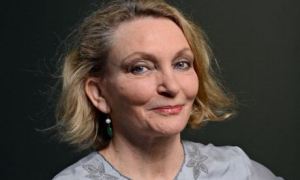At the Byron Bay Writers Festival this month I met Robyn Davidson, and have since been immersed in her book Tracks. As you might know from the recently released movie of the same name, it’s about her odyssey on foot and camel from the centre of Australia to the coast in the 1970s. I haven’t seen the film but have gone online to search images of various characters who feature in the book, mostly to discover that the real people (‘the originals’) have been usurped by screen-stills of their movie-star avatars. Take only photographs, leave only footprints, or something.
This memoir has got me thinking about the literary difference between confession and candour. There is intimacy to a confession that draws you in, makes you lean closer. I often admire softly spoken people for the effect of their modest pitch. But speaking up and speaking clearly doesn’t have to mean shouting. (I have a theory that this is something women, particularly, worry about, for various obvious reasons.) Tracks reads like a direct, honest book, and involves transformation and soul-searching, but has none of the tinge of confession that we often find in personal stories. Davidson does not position the reader as more or less powerful than her narrating self. She’s not in search of absolution and she accepts there are limits to understanding, even as she tries to expand her own – and ours. If she moves us, that is an effect of the work, not the primary goal, which seems like something simpler, such as exploring, if that’s not too reductive.
If the book were being written now it’s easy to imagine a different and possibly diminished version – even, in our documented age, the self-consciousness of a journey undertaken in order to tell the tale. Back-story, confession, analysis, struggle, revelation, growth. The book as it stands resists that order, refusing to psychoanalyse itself in any simplistic way, and spares the author nothing, good or bad, in all of her incarnations through the desert. It’s beautifully shaped: expansions and digressions are made and much is elided. The shifting tone is anecdotal, lyrical, pragmatic, bewildered, funny and angry, and in leaving questions unresolved the memoir chooses honesty over comfort.
There’s more that I’m thinking through about this, and if anyone has responses I’d love to hear them. In the meantime here is a distinction between candour and confession I plan to take into my writing and teaching: confessional work asks to be forgiven, or to be liked, whether ingratiatingly or confrontationally; candid work has other motives. In candid writing the writer and reader are equal, with cost and reward to both in the investment. No one is showing her pain to elicit sympathy, and no one is falsely comforted by a sense of superiority or ‘there but for the grace of God’. Candid writing generates more clear-eyed recognition than misty sympathy. A book like Tracks is interested in exploring the larger nature of the story it is telling, leaving an open space for the reader to enter. Before the 18th Century, when ‘candour’ came to mean ‘freedom from reserve in one’s statements; openness, frankness, outspokenness’, its meanings included ‘openness of mind’ and ‘freedom from malice’. Its root cand also belongs in candle, and accendere: to kindle, to set alight.
Emily Perkins teaches the MA Fiction Workshop at the IIML. Her most recent novel is The Forrests.



